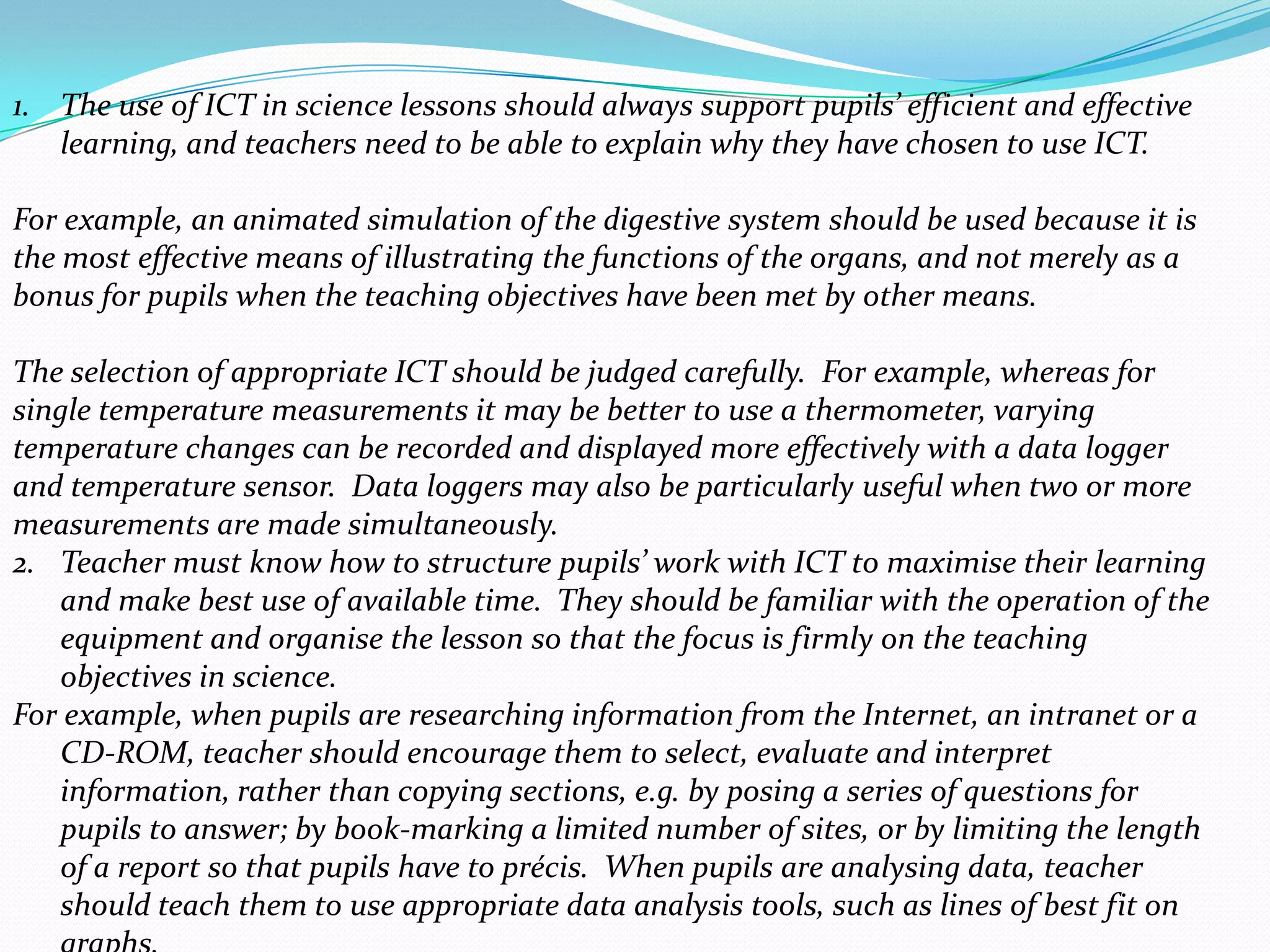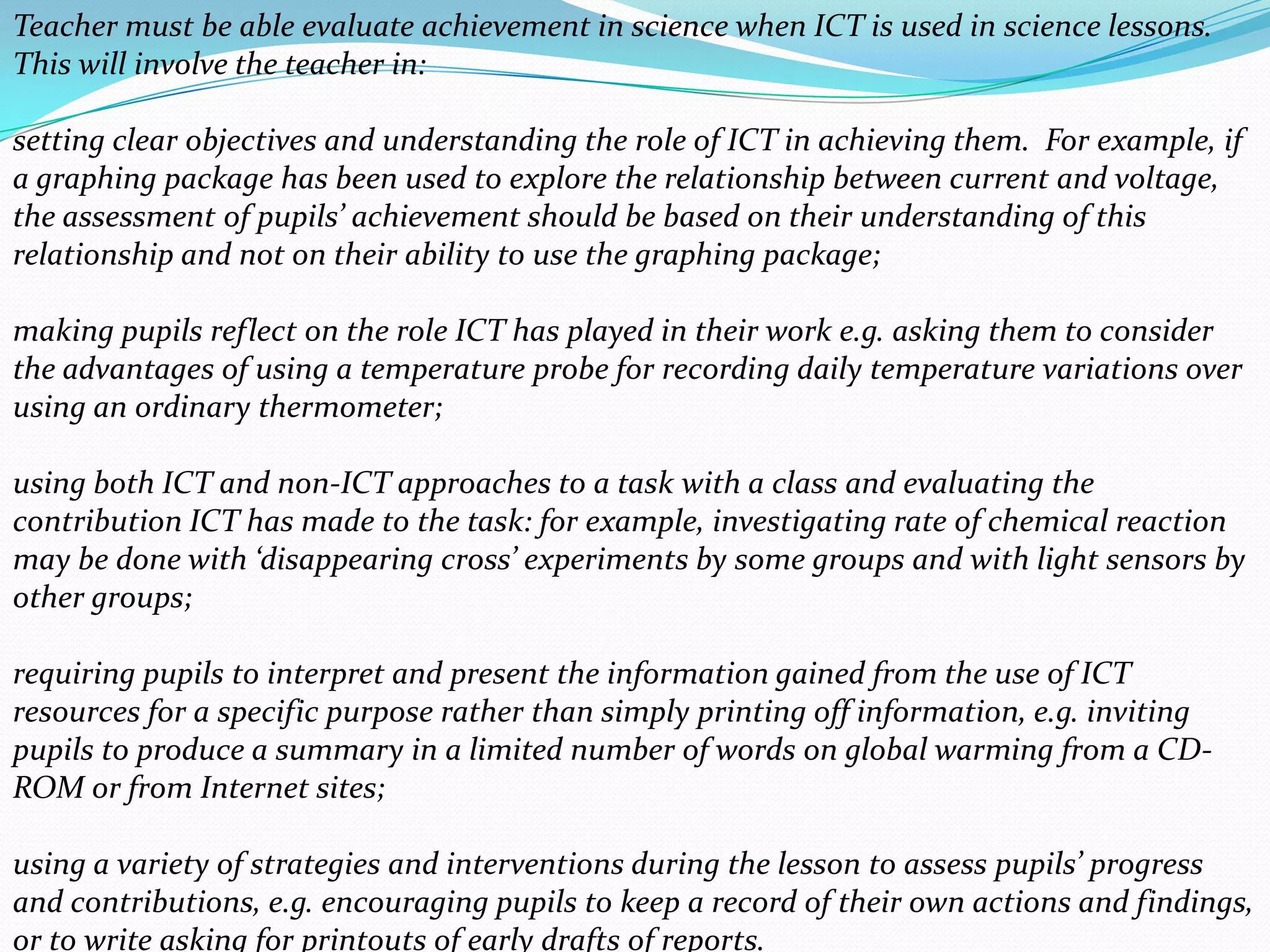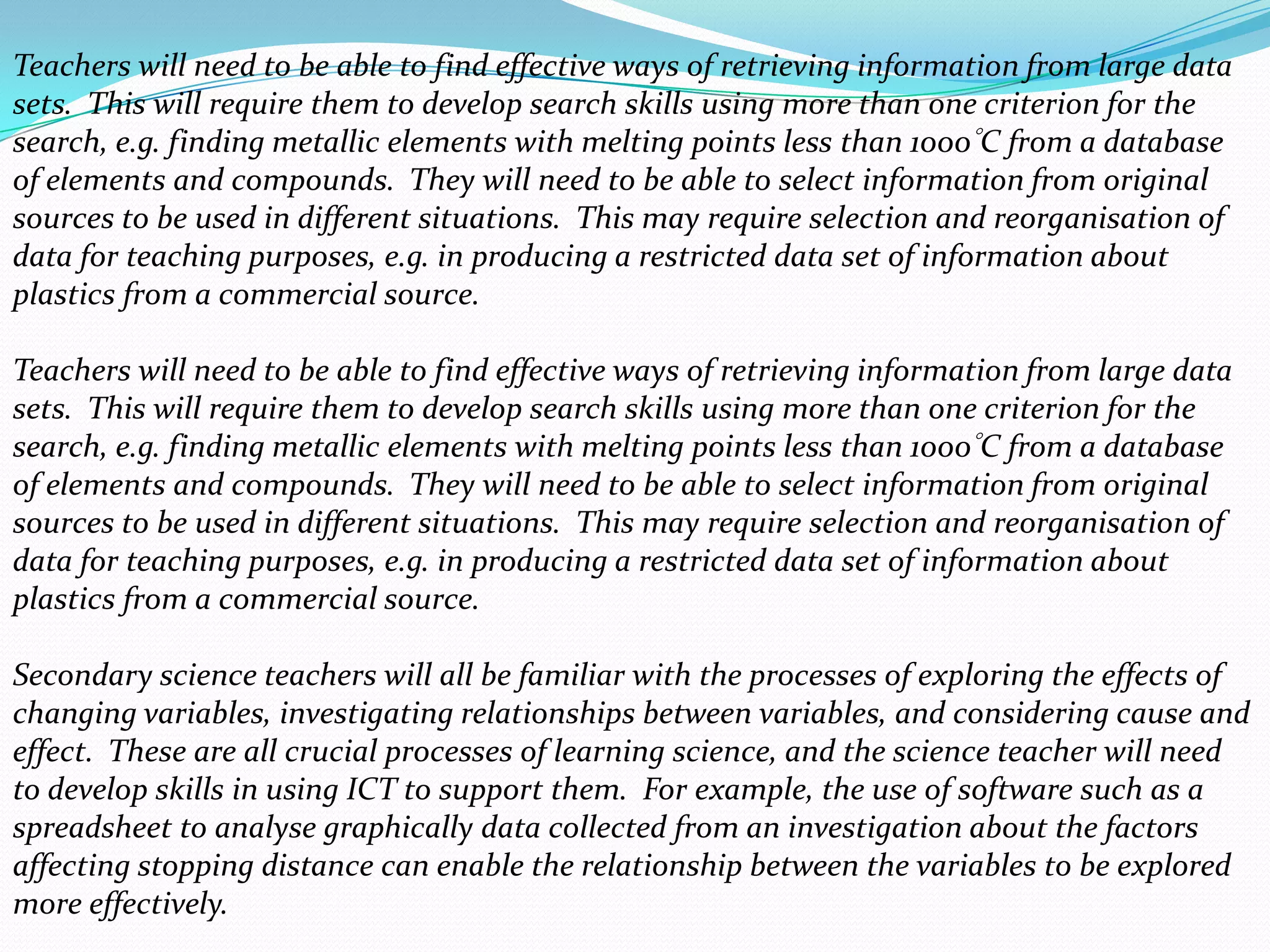1. Science teachers must understand how to effectively integrate ICT into their lessons to support learning objectives. They should be able to explain how ICT tools like simulations and data loggers help illustrate scientific concepts better than alternative methods.
2. When using ICT, teachers must structure lessons so students focus on learning rather than just using technology. They should ask guiding questions and limit internet research time to deepen understanding.
3. Teachers need to know how modern scientists use ICT, like spreadsheets, and discuss examples to show relevance to students' future work.

















